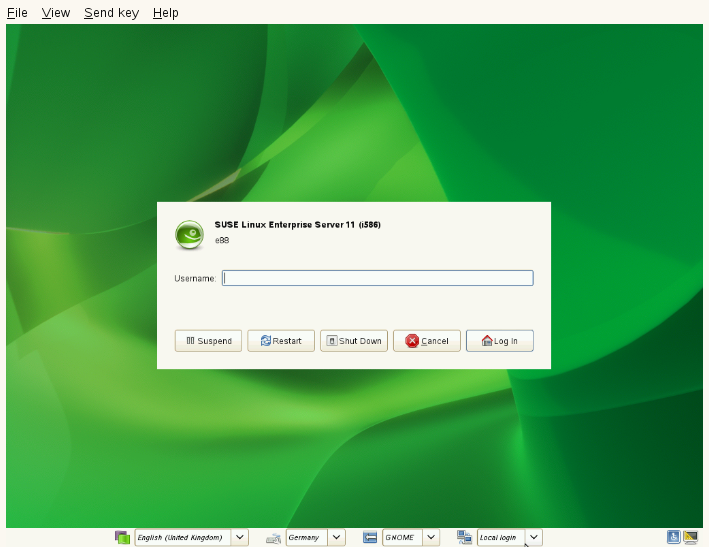Suse Linux Enterprise Server 11 Crack
Copyright © 2006– 2019 SUSE LLC and contributors. All rights reserved. Permission is granted to copy, distribute and/or modify this document under the terms of the GNU Free Documentation License, Version 1.2 or (at your option) version 1.3; with the Invariant Section being this copyright notice and license.
Here is how to reset a forgotten root password on Novell SUSE This is a guide for Novell SUSE Linux Enterprise Server 10 SP3. On the boot menu select the first option “SUSE Linux enterprise server” and press ‘e’ for edit. SLES boot menu On the second menu select the kernel option and press ‘e’ for edit.
A copy of the license version 1.2 is included in the section entitled “ GNU Free Documentation License”. For SUSE trademarks, see. All other third-party trademarks are the property of their respective owners. Trademark symbols (®, ™ etc.) denote trademarks of SUSE and its affiliates. Asterisks (*) denote third-party trademarks.
All information found in this book has been compiled with utmost attention to detail. However, this does not guarantee complete accuracy. Neither SUSE LLC, its affiliates, the authors nor the translators shall be held liable for possible errors or the consequences thereof.
This guide is intended for use by professional network and system administrators during the operation of SUSE® Linux Enterprise. As such, it is solely concerned with ensuring that SUSE Linux Enterprise is properly configured and that the required services on the network are available to allow it to function properly as initially installed. This guide does not cover the process of ensuring that SUSE Linux Enterprise offers proper compatibility with your enterprise's application software or that its core functionality meets those requirements.
It assumes that a full requirements audit has been done and the installation has been requested, or that a test installation for such an audit has been requested. This guide contains the following. Support and Common Tasks SUSE Linux Enterprise offers a wide range of tools to customize various aspects of the system. This part introduces a few of them. A breakdown of available device technologies, high availability configurations, and advanced administration possibilities introduces the system to the administrator. System Learn more about the underlying operating system by studying this part.
SUSE Linux Enterprise supports several hardware architectures and you can use this to adapt your own applications to run on SUSE Linux Enterprise. The boot loader and boot procedure information assists you in understanding how your Linux system works and how your own custom scripts and applications may blend in with it.

Services SUSE Linux Enterprise is designed to be a network operating system. It offers a wide range of network services, such as DNS, DHCP, Web, proxy, and authentication services. It also integrates well into heterogeneous environments, including MS Windows clients and servers.

Mobile Computers Laptops, and the communication between mobile devices like PDAs, or cellular phones and SUSE Linux Enterprise need some special attention. Take care for power conservation and for the integration of different devices into a changing network environment. Also get in touch with the background technologies that provide the needed functionality. Troubleshooting Provides an overview of finding help and additional documentation when you need more information or want to perform specific tasks. There is also a list of the most frequent problems with explanations of how to fix them. Article “ Installation Quick Start” This Quick Start guides you step-by-step through the installation of SUSE® Linux Enterprise Server 15 SP1.
Bsa airsporter serial numbers3305100. Book “ Deployment Guide” Shows how to install single or multiple systems and how to exploit the product inherent capabilities for a deployment infrastructure. Choose from various approaches, ranging from a local installation or a network installation server to a mass deployment using a remote-controlled, highly-customized, and automated installation technique. Covers system administration tasks like maintaining, monitoring and customizing an initially installed system. Book “ Virtualization Guide” Describes virtualization technology in general, and introduces libvirt—the unified interface to virtualization—and detailed information on specific hypervisors. Book “ Storage Administration Guide” Provides information about how to manage storage devices on a SUSE Linux Enterprise Server.